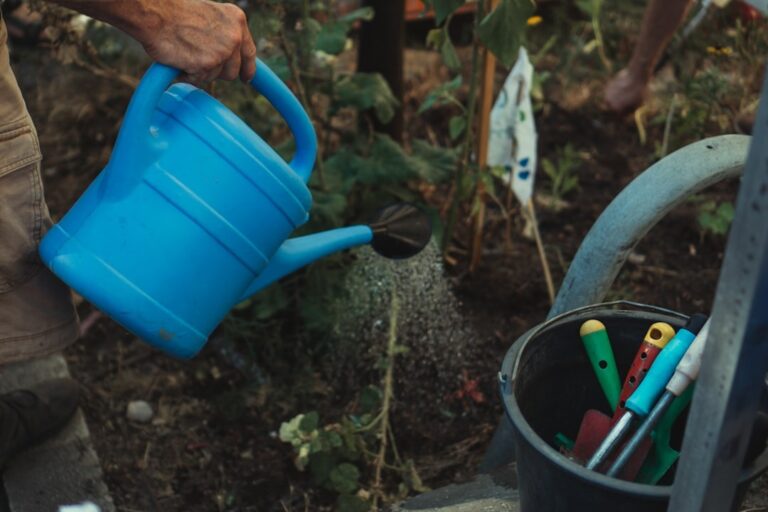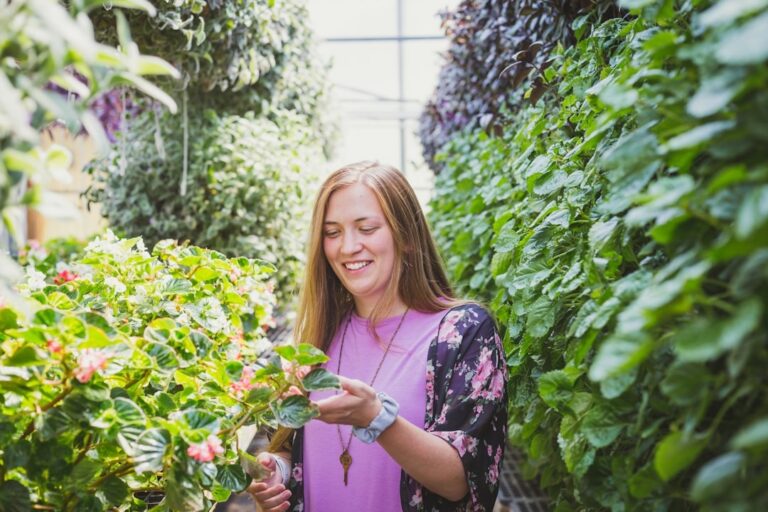10 Tips to Be a Successful Lazy Gardener
Welcome to my very lazy garden! Here, I’ll share simple tips and tricks that will help you become a better lazy gardener, saving time and effort while still achieving a beautiful and productive garden.
From tool hacks to soil care, this guide covers everything you need to know to embrace the art of gardening with less work.
Keep Your Tools Where You Need Them
One of the best productivity hacks is placing duplicate tools where you use them most.
Garage sales are a treasure trove for inexpensive garden tools, and if they rust over time, it’s no problem. You’ve spent pennies on them. The convenience of having the right tool within reach, right where you need it, is a game changer.
For example, I leave my compost system along my daily walking path. This allows me to monitor the thermometers and stir the compost as needed, all without extra effort.
Located near both my barn and garden, the compost system is perfectly positioned for ease of use. Similarly, quick-change hose systems eliminate the need to constantly unscrew multiple attachments, saving time when watering or using faucets.
Wood Chips for Watering Freedom
As a lazy gardener, my secret to minimal watering is wood chips. Wood acts as a sponge, soaking up excess moisture during rains or the few times a year I water my garden.
It slowly releases this moisture back into the soil, keeping it damp even during droughts. Here in Tennessee, we’re in the middle of a dry season, and I haven’t watered my garden at all this year. Yet the lush growth speaks for itself.
While some gardeners worry about nitrogen or nutrient loss caused by wood chips, it’s a temporary issue easily fixed with compost or nitrogen-fixing plants like beans.
Letting beans go to seed and grow as volunteers makes this process effortless. Avoid exotic hardwoods, pressure-treated lumber, or anything with toxic glues in your garden, as these materials can contaminate your soil and food.
Let Plants Go to Seed
Letting plants go to seed is one of the best ways to be a lazy gardener. You accidentally get new plants without any additional effort.
Whether it’s beans, dill, or amaranth, letting them self-seed will surprise you with volunteers next year.
However, while laziness pays off in this case, be careful not to let weeds go to seed. Pulling weeds before they seed ensures they don’t spread throughout your garden.
Learn from Your Weeds
Weeds can tell us a lot about our garden. Pay attention to the types of weeds growing naturally; they often indicate ideal growing conditions for certain crops.
For example, dandelions, with their deep taproot, break up soil and pull nutrients to the surface. Non-seeding varieties are especially helpful in improving clay soil without spreading uncontrollably.
Avoid Bare Soil
Leaving soil bare is a big no-no for lazy gardeners. Bare soil dries out quickly, requires excessive watering, and erodes, taking your valuable topsoil away with the wind.
Mitigate this disaster by using wood chips or practicing the “chop and drop” method. When harvesting plants like rhubarb, cut off the leaves and place them around the base of the plant.
This practice helps decompose nutrients back into the soil while keeping it moist.
Plant Perennials
Perennials are a lazy gardener’s best friend. Since they grow back year after year, you save time on replanting and enjoy consistent harvests.
In Tennessee, some plants like dahlias even behave like perennials because their tubers rarely rot over the winter.
Plan with your trellises and cages to give plants plenty of airflow and avoid fungal diseases.
Plant Extras for Success
Sometimes pests and diseases get the best of your crops, and that’s okay! Planting extra ensures you’ll always have enough to harvest, even if some of your plants fall victim to challenges.
When infestations occur, tools like vacuums come in handy to remove pests like beetles and cabbage worms without harmful chemicals. Pest-ridden leaves can be fed to chickens, who turn them into nutritious eggs.
For plants that are beyond saving, don’t waste time trying to revive them. Remove damaged plants to prevent pests and diseases from spreading, and focus your efforts on crops that will thrive in your garden.
Ignore Soil Testing
While soil tests provide valuable data, constantly adding mulch, compost, and other amendments means your soil changes quickly, even from one foot to the next.
Instead of relying on tests, observe your plants; yellowing leaves or stunted growth often indicate nutrient deficiencies or other problems.
Free plant identification apps can help you diagnose issues and find solutions as you walk through your garden.
Appreciate Helpful Weeds
Not all weeds are bad. Some weeds break up clay soil, retain moisture, and create airflow underground.
Unless weeds are impeding the growth of your crops, they can coexist with your garden and even provide benefits.
Practice restraint when pulling weeds, letting beneficial ones support your soil health.
Starve Plants to Strengthen Roots
Plants like raspberries may show signs of thirst, such as curly leaves, but they also send deep roots into the soil when deprived of water.
Encouraging plants to rely on ground moisture rather than frequent watering ultimately results in healthier, more self-sufficient crops.
Build Healthy Soil
Healthy soil produces resilient plants that require less watering and are more resistant to pests and diseases.
Investing in your soil’s health saves time in the long run, as robust plants can feed your family with minimal effort.




